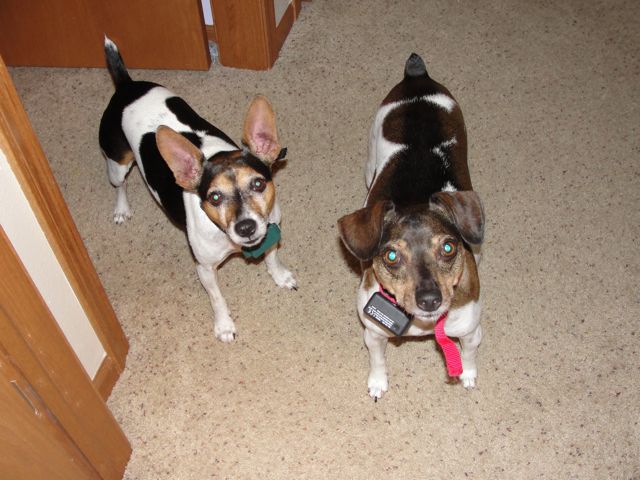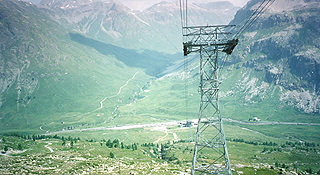USB Shielding, Device Or Host Side?
페이지 정보
작성자 Lashay 댓글 0건 조회 2회 작성일 25-03-28 15:13본문
 Use numerous SMD capacitors to connect the chassis and shield. If the connectors are mounted onto the circuit board, use metallic I/O cowl, EMI gaskets, grounding fingers, or other means to create a strong connection between the metal shell of the connector and the chassis. For example, a coaxial connector should ideally be screwed onto the chassis immediately, before the identical "shield/ground" and heart conductor wires attain the circuit board. Ideally, the connector needs to be mounted directly onto the chassis first. Any electrical path would be a connection, however termination emphasizes the first location a contact is made. The internal circuit floor should be connected to the chassis at a point as near the placement that the cables terminate on the PCB as possible. Thus, avoiding injecting noise from the shield to the circuit ground turns into a problem. Thus, it needs to be considered on a case-by-case basis, and it's a non-normal solution.
Use numerous SMD capacitors to connect the chassis and shield. If the connectors are mounted onto the circuit board, use metallic I/O cowl, EMI gaskets, grounding fingers, or other means to create a strong connection between the metal shell of the connector and the chassis. For example, a coaxial connector should ideally be screwed onto the chassis immediately, before the identical "shield/ground" and heart conductor wires attain the circuit board. Ideally, the connector needs to be mounted directly onto the chassis first. Any electrical path would be a connection, however termination emphasizes the first location a contact is made. The internal circuit floor should be connected to the chassis at a point as near the placement that the cables terminate on the PCB as possible. Thus, avoiding injecting noise from the shield to the circuit ground turns into a problem. Thus, it needs to be considered on a case-by-case basis, and it's a non-normal solution.
This requires the usage of awkward and non-normal cables and is unpopular at the moment. Use ferrite beads to connect the shield to the circuit ground. If a connection is still made from the shield to the circuit ground, noise is injected instantly into the circuit board's floor plane. Thus, the shield for the twisted pair will be dedicated for low-frequency shielding solely, and nonetheless providing acceptable EMI/EMC performance. Many low-frequency circuits contain high-impedance devices which might be inclined to electric field coupling, hence, the significance of low-frequency cable shielding. Any small noise voltage brought on by a difference in ground potential which will couple into the circuit (primarily at energy line frequencies and its harmonics) is not going to affect digital circuits and can normally be filtered out of rf circuits, due to the large frequency difference. If the ground airplane is bonded to the chassis at the appropriate facet of the board, whereas the cable enters at the left side of the circuit board, this potential difference would trigger a standard-mode noise current to movement, degrading the EMI/EMC efficiency of the system. In Williams' anecdotal observations, floating shield, RC and ferrite bead solutions performs poorly beneath ESD strikes, and is a typical trigger of failure of ESD compliance exams.
 This voltage will drive a typical-mode current out on the cable, and can trigger the cable to radiate. After the metal enclosure is zapped by ESD, the circuit ground potential is held by the cable, enabling a secondary ESD strike might develop from the chassis to the circuit floor, finally leaving the system through an hooked up cable. Chassis floor is any conductor that's connected to the equipment’s metal enclosure. At low frequency, shields on multiconductor cables the place the shield isn't the signal return conductor are often grounded at only one finish. Having two shields that are isolated from one another allows the designer the choice of terminating the 2 shields in a different way. Most copper between the 2 regions are removed, only a small bridge is used to connect each planes, permitting high-frequency signals to move on high of the bridge with out crossing a slot within the aircraft, while offering a level of isolation between the circuit floor of chassis ground.
This voltage will drive a typical-mode current out on the cable, and can trigger the cable to radiate. After the metal enclosure is zapped by ESD, the circuit ground potential is held by the cable, enabling a secondary ESD strike might develop from the chassis to the circuit floor, finally leaving the system through an hooked up cable. Chassis floor is any conductor that's connected to the equipment’s metal enclosure. At low frequency, shields on multiconductor cables the place the shield isn't the signal return conductor are often grounded at only one finish. Having two shields that are isolated from one another allows the designer the choice of terminating the 2 shields in a different way. Most copper between the 2 regions are removed, only a small bridge is used to connect each planes, permitting high-frequency signals to move on high of the bridge with out crossing a slot within the aircraft, while offering a level of isolation between the circuit floor of chassis ground.
Use a triaxial cable with two layers of shields, one is related at one finish for low-frequency shielding, another is related at both ends for RF shielding. However, at high frequency, the capacitor turns into a low impedance, which converts the circuit to 1 that is grounded at each ends. At low frequency, a single-point floor exists as a result of the impedance of the capacitor is giant. Due to the circulate of present, there exists a voltage gradient across the circuit floor aircraft of the circuit board. Then again, making a strong connection between the shield and the circuit ground suppresses this potential distinction, scale back radiation (of course, this is not the only possible failure mode, and i can imagine that there are other situations that it may create the other situation). Another flaw talked about by Williams, if I remember accurately, was the difficulty of widespread-mode radiation when the cable shield and power/signal ground just isn't at the identical potential.
If you loved this article therefore you would like to collect more info pertaining to shield control cable i implore you to visit the page.
댓글목록
등록된 댓글이 없습니다.


